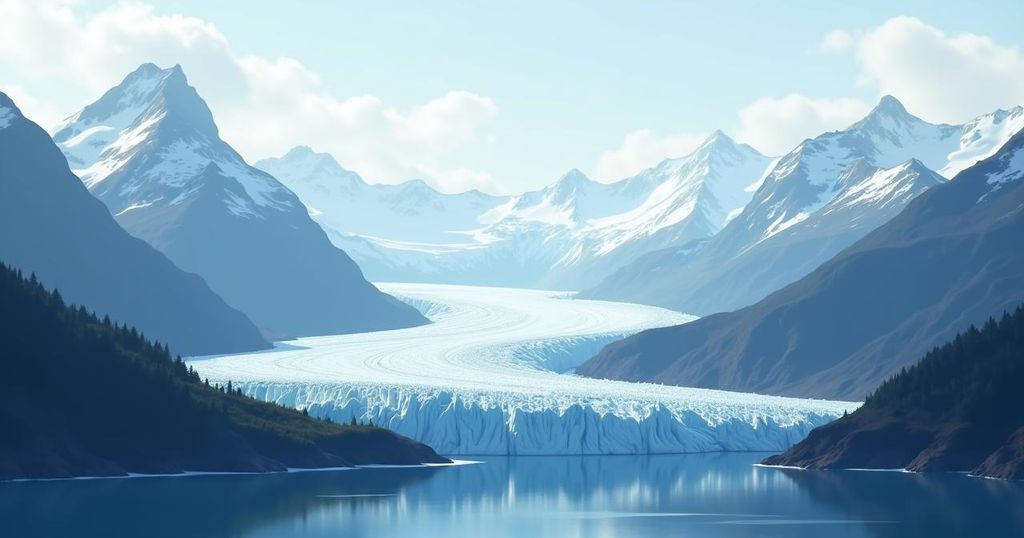Rock glaciers, prevalent in the Wasatch Mountains, are covered masses of ice, insulated by rocks. They demonstrate remarkable resilience to climate change compared to surface glaciers, making them vital for water resources in increasingly arid regions like Utah. Despite their abundance, they remain understudied compared to other glacier types, highlighting an urgent need for more research to understand their role in the ecosystem and water supply.
In the Wasatch Mountains near Salt Lake City, Utah, there exists a rather unconventional type of glacier known as a rock glacier. These formations, characterized by a mass of flowing ice encased in debris, are attracting scientific interest due to their remarkable resilience in the face of climate change. Scott Hotaling, a mountain ecologist from Utah State University, underscores their importance, stating that their coverage of rocks serves as insulation, protecting them from the adverse effects of temperature rises and subsequent climate shifts. While rock glaciers may not evoke the traditional imagery associated with glaciers, their presence is significant; with over 10,000 documented in the western United States, they are more prevalent than typical glaciers. Surprisingly, only a small subset of scientists actively researches these formations, contributing to a gap in our understanding. Historical studies suggest that the concept of rock glaciers dated back to the early 1900s, gaining initial recognition in the scientific community with reports from Colorado and Alaska. Notably, research in the European Alps demonstrates that rock glaciers can maintain their ice mass significantly better than surface glaciers that are rapidly disappearing. Current findings reveal that rock glaciers in the U.S. exhibit comparable trends of stability, leading researchers to believe they may become increasingly prominent as climate change erodes more traditional ice forms. Fieldwork, such as that conducted by Mr. Hotaling and his colleagues in the Teton Mountains, reveals staggering rates of ice loss in surface glaciers, indicating that rock glaciers will be critical for sustaining water supplies in arid regions like Utah. Their hidden nature—often blending seamlessly into the rocky landscape—adds a layer of mystery, as many hikers unknowingly pass these vital ice formations. Despite their potential, studying rock glaciers presents challenges due to the mixed nature of ice and rock, which obscures quantification efforts. However, efforts to assess the water flowing from these glaciers are progressing. Research indicates that rock glaciers contain significant water stores critical for ecosystems and municipal water supplies alike. In fact, over half of Salt Lake City’s drinking water is derived from canyons featuring these underappreciated geological formations. As climatic conditions continue to evolve, understanding the role of rock glaciers will be paramount in preserving water resources essential for the future.
Rock glaciers are unique geological formations comprised of flowing ice covered by rock debris, distinguishing them from typical glaciers. Over 10,000 of these features are found in western states, notably in the Wasatch Mountains of Utah. They have garnered recent scientific scrutiny due to their potential as a stable water resource in the face of climate-induced warming. Historically, research on rock glaciers has been limited, primarily focused on locations in Europe, which may have contributed to the underrepresentation of such studies in the U.S.
In conclusion, rock glaciers represent a critical yet overlooked aspect of the landscape that could offer significant insights into climate resilience and resource management. Their ability to store large quantities of water and maintain stability under climate change reinforces the need for increased research and public awareness. As climate change progresses, rock glaciers may play an essential role in sustaining water supplies for ecosystems and urban populations, particularly in arid regions. Understanding their dynamics is key to adapting to future environmental challenges. Thus, greater focus on these formations is both necessary and timely.
Original Source: www.mainepublic.org






